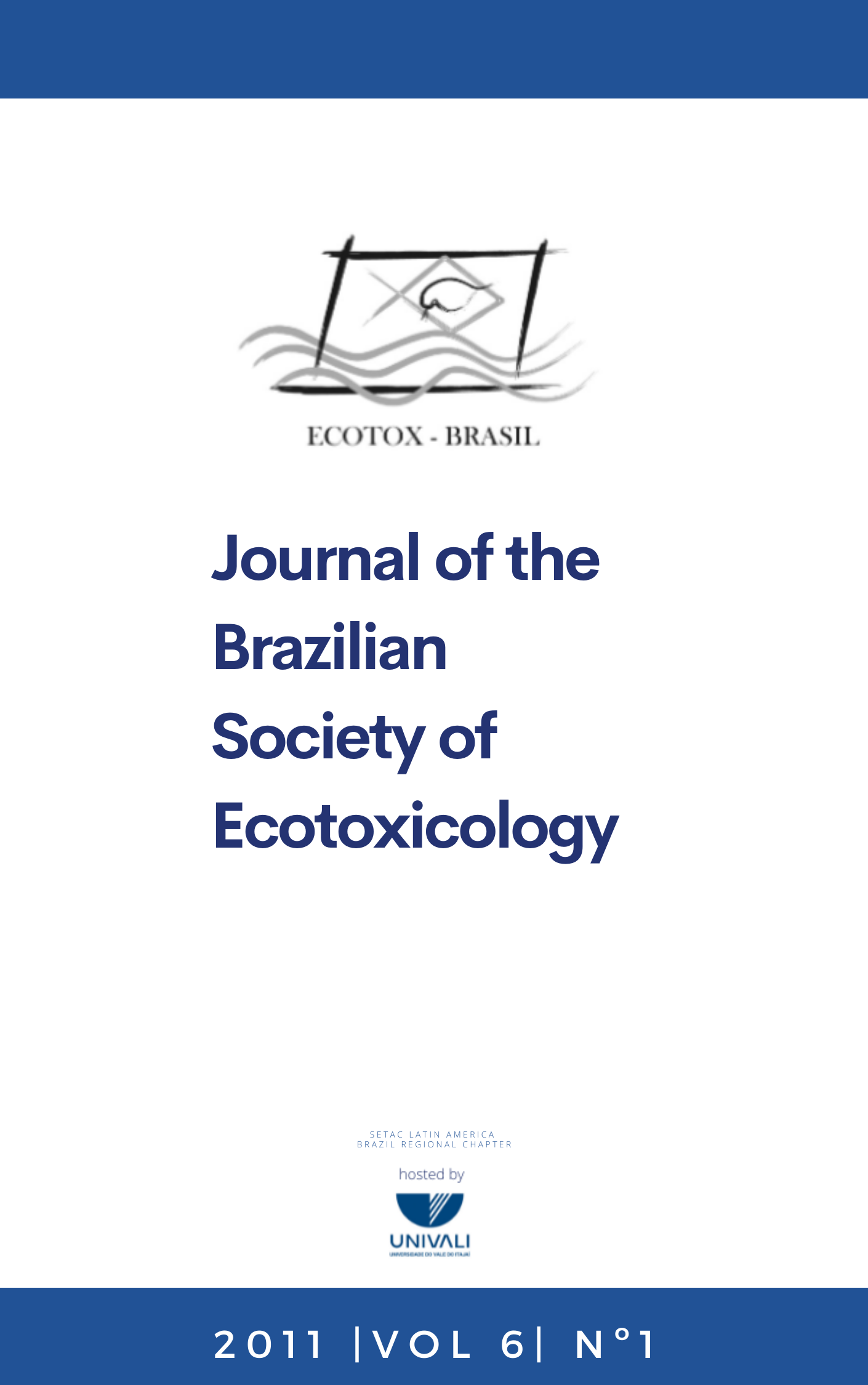Changes in antioxidative defense system of Stizolobium aterrimum and Canavalia ensiformis exposed to arsenic
Abstract
The present work evaluated the antioxidant responses of Stilozobium aterrimum and Canavalia ensiformis after exposure to arsenic (As). Plants of these two species with the first pair of fully expanded cotyledonary leaves, grown in nutrient solution, pH 5.5, were treated with 0.0 and 1.5 mg.L-1 of As. After 5 days, the effects of As on lipid peroxidation and antioxidant enzymes were measured. Lipid peroxidation increased in both roots and leaves after As treatment, especially in S. aterrimum. Superoxide dismutase (SOD) activity increased in the two parts of the plants of both species with As treatment. Peroxidase (POX) activity, on the other hand, reduced with As treatment in S. aterrimum, but increased in C. ensiformis. Glutathione reductase (GR) increased in roots of both species, mainly in S. aterrimum. GR activity also increased in the leaves of C. ensiformis, but decreased in S. aterrimum. Under the experimental conditions of this study, C. ensiformis was considered to have antioxidant mechanisms slightly more efficient than S. aterrimum against reactive oxygen intermediates (ROIs).
Keywords: arsenic, antioxidative mechanisms, lipid peroxidation, reactive oxygen intermediates.
Downloads
How to Cite
Issue
Section
License
Copyright © 2006 ECOTOX-Brasil
Copyright notice: It is a condition for publication that manuscripts submitted to this journal have not yet been published and will not be simultaneously submitted or published elsewhere. By submitting a manuscript, the authors agree that copyright for their article is transferred to the Sociedade Brasileira de Ecotoxicologia (ECOTOX-Brasil) if and when the article is accepted for publication. The copyright covers the exclusive rights to reproduce and distribute articles, including reprints, photographic reproductions or any other reproduction of a similar nature, including translations. No part of this publication may be reproduced, stored in a retrieval system or transmitted in any form or by any means, electronic, mechanical, photocopying, recording or otherwise, without permission of the publisher.
Notice: While every effort is made by the EEC, editors and editorial board to see that no inaccurate or misleading data, opinions or statements appear in this journal, they wish to make it clear that the contents of the articles and advertisements published herein are the sole responsibility of the contributors or advertisers concerned. Accordingly, the EEC, the editorial board and editors and their respective employees, officers and agents accept no responsibility or liability whatsoever for the consequences of any inaccurate or misleading data, opinion or statement.




